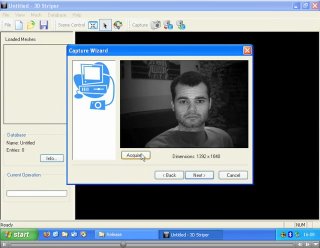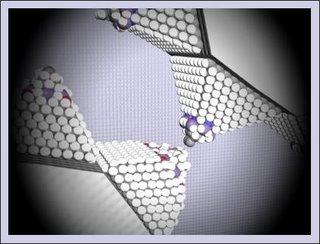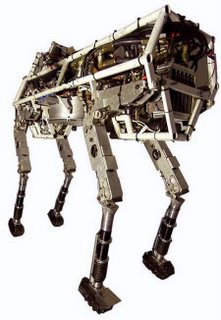I read a few articles recently that were all related to one topic. Namely the ongoing trend in the miniaturisation of computers.
I have written about shrinking computers in my blogpost series The Future Of Computers.
And here's some extra info showing that the trend is still going strong.
1. Notebook-Ready Fuel Cell To Be Shown Next Week
The methanol-powered Antig fuel cell provides 45 watts of power on a single "tank" of methanol, and weighs 3.7 pounds (1.7 kg). In total, the additional power should be enough to operate the notebook for eight hours, AVC said, which was responsible for engineering the fuel cell into the notebook housing.
Fuel cells are important because they provide more power than conventional energy sources while taking up the same volume.
2. Spansion Tips 45-nm, Quad-bit FlashAs part of the roadmap, Spansion (Sunnyvale, Calif.) dropped hints about a quad-bit, NAND-like product line that is targeted for the 45-nm node in 2008.
Beyond the so-called Quad Bit line, there were no roadmap surprises at Spansion, which is experiencing a string of losses amid a downturn in the NOR flash market. The company — formerly the NOR flash venture between Advanced Micro Devices Inc. (AMD) and Fujitsu Ltd. — recently went public.
...
By year’s end, Spansion hopes to move to a 65-nm process in its flagship Fab 25 facility in Austin, Texas. The company’s Fab 25 plant is also making 110- and 90-nm devices as well. Its foundry partner, Taiwan Semiconductor Manufacturing Co. Ltd., is also ramping up 110-nm parts, according to Spanion.
And by 2008, it hopes to migrate to a four-bit-per-cell architecture, dubbed Quad Bit, based on a 45-nm process. The company did not disclose details about the product.
A size of 45 nanometers is half of what our CPU's components are at the time of writing, which is 90 nanometers. And not only are dimensions shrinking, we are also stuffing more bits in one cell. Current memory chips store only one bit per cell.
A cell stores an electrical charge, which can be either low or high, corresponding to a zero or a one (I'm not sure if that's the correct order though), which is essentially one bit.
These future flash chips are able to store 4 bits in one cell.
That's a good way of stuffing more information in the same volume, and thereby (since everything is relative) shrinking memory modules.
3. Philips Produces 65nm System On A ChipRoyal Philips Electronics today announced it is securing its position at the leading edge of low-power CMOS technology for consumer-product applications, by successfully implementing a right-first-time 65-nm System-on-Chip (SoC) with the design complexity required in next-generation mobile multimedia and home entertainment products such as 3G mobile phones and high-performance LCD TVs.
Featuring an IEM™ (Intelligent Energy Manager) technology-enabled ARM1176JZF-S™ processor, 512 Kbytes of high-speed low-power scratch-pad memory, high-speed communication ports and key analog IP blocks, the new Philips chip is the first truly consumer-product oriented SoCs to be successfully produced in 65-nm low-power CMOS. It has been designed, as a platform to demonstrate what next-generation consumer products will be able to deliver in terms of a rich multimedia experience coupled with sense and simplicity of operation. It is already at the heart of new 65-nm CMOS SoCs currently in an advanced stage of development at Philips.
...
Extensive testing has already seen the new Philips SoC booting and running the Linux operating system, which is rapidly gaining favor in the consumer-electronics market due to its modularity, scalability, open-source philosophy and low-cost development tool support.
The term
system on a chip is gaining popularity. It means exactly what it says. It's a whole system on just one chip, as opposed to the big pc cases filled with components that are now required to build one system.
Also very impressive is that Philips has managed to run the Linux OS on it.
So all in all, this once again shows we're looking at a future filled with extremely small computers.

























